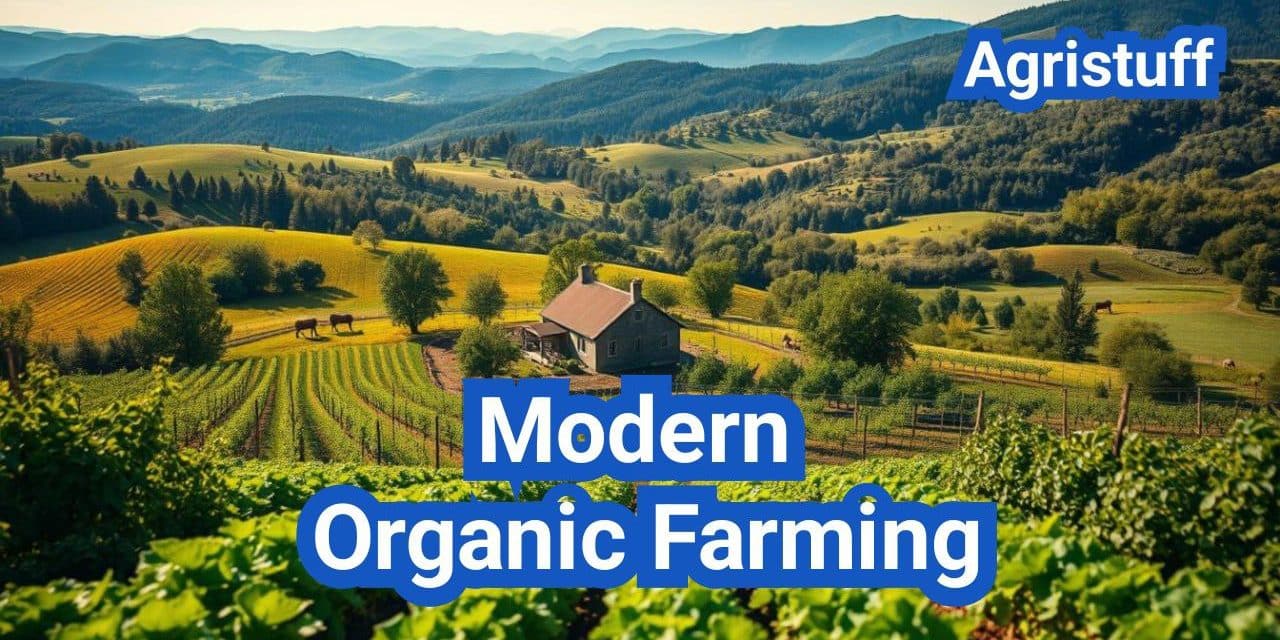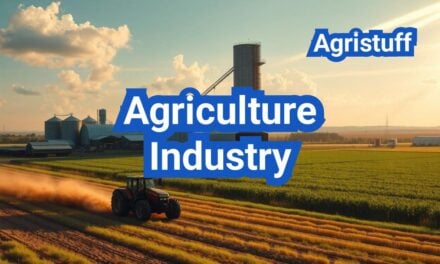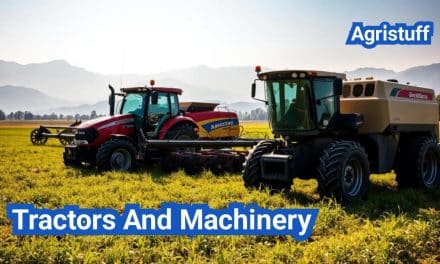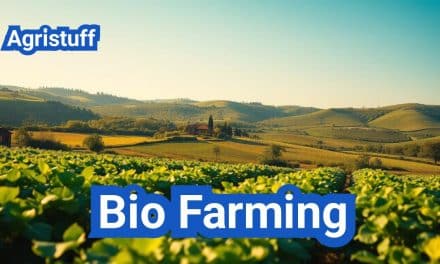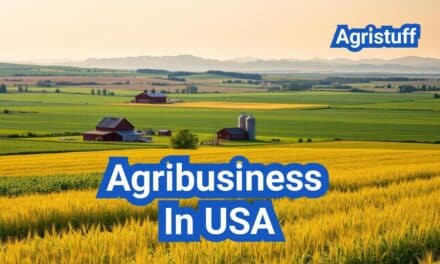Sustainable farming practices have gained significant attention in recent years due to their potential to promote environmentally friendly agriculture.
Organic agriculture focuses on producing healthy products free from harmful components, ensuring a safer and more sustainable food system.
The importance of organic farming lies in its ability to maintain soil quality, conserve water, and reduce the use of toxic chemicals.
As the world shifts towards more sustainable practices, understanding the principles and benefits of modern organic farming is crucial.
Key Takeaways
- Organic Farming promotes environmentally friendly farming practices.
- Sustainable farming methods conserve natural resources.
- Modern organic farming reduces the use of toxic chemicals.
- Organic farming maintains soil quality and promotes biodiversity.
- Adopting sustainable farming practices supports a healthier food system.
The Fundamentals of Modern Organic Farming
Organic farming, in its modern form, is not just a method of farming but a philosophy that prioritizes the health of the ecosystem. It represents a significant departure from conventional farming practices by emphasizing natural processes and biodiversity.
Defining Modern Organic Agriculture
Modern organic agriculture is characterized by its reliance on ecological processes and biodiversity. It avoids the use of synthetic inputs such as chemical fertilizers and pesticides, instead opting for techniques like crop rotation and composting to maintain soil fertility and control pests.
Key Principles and Philosophy
The philosophy behind modern organic farming is rooted in the belief that agricultural practices should work in harmony with natural systems. Key principles include maintaining soil health, conserving water, and promoting biodiversity. As the renowned agronomist, Sir Albert Howard, once said, “The maintenance of the fertility of the soil is the fundamental problem of agriculture; the whole of the other problems hinge upon it.” This underscores the importance of soil conservation and management in organic farming.
Benefits for Farmers, Consumers, and the Environment
Modern organic farming offers numerous benefits. For farmers, it can lead to improved soil health and increased biodiversity, potentially resulting in more resilient farming systems. Consumers benefit from reduced exposure to chemical residues, and the environment profits from conservation efforts. According to a study, “Organic farming systems produce on average 20-40% lower yields but have 30-50% lower environmental impacts compared to conventional farming.”
Getting Started: Planning Your Organic Farm
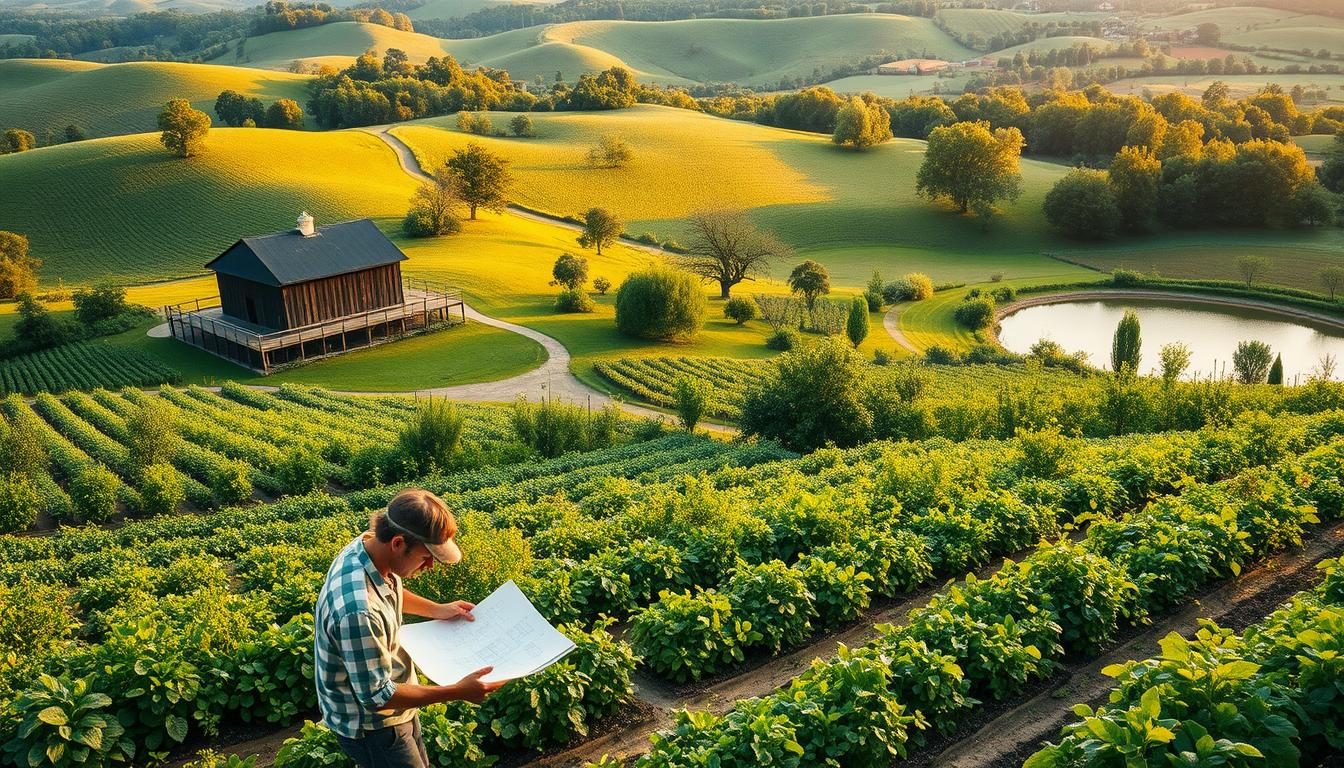
Before breaking ground on an organic farm, it’s essential to plan meticulously, considering factors like soil quality and climate. Effective planning is the foundation of a successful organic farming operation.
Assessing Your Land and Resources
Assessing the land and resources is a critical step in organic farm planning. This involves evaluating the soil condition, climate, and available resources to determine the farm’s potential.
Soil Testing and Analysis
Soil testing is a crucial aspect of land assessment. It helps determine the soil’s nutrient content, pH level, and structure. Accurate soil analysis enables farmers to make informed decisions about crop selection and soil amendments.
Climate and Microclimate Evaluation
Understanding the climate and microclimate of your farm is vital for choosing the right crops and planning farming activities. This evaluation helps in identifying potential challenges and opportunities.
Setting Realistic Goals and Timelines
Setting realistic goals and timelines is essential for the success of an organic farm. This involves creating achievable milestones and deadlines, taking into account the farm’s resources and potential challenges.
Creating a Sustainable Farm Business Plan
A sustainable farm business plan is crucial for the long-term success of an organic farm. It should include strategies for crop rotation, soil conservation, and market analysis. A well-crafted business plan helps farmers navigate the complexities of organic farming.
| Aspect | Description | Importance |
|---|---|---|
| Soil Testing | Analyzing soil nutrient content and structure | High |
| Climate Evaluation | Understanding local climate and microclimate conditions | High |
| Goal Setting | Establishing realistic goals and timelines | Medium |
| Business Planning | Creating a comprehensive and sustainable business plan | High |
Understanding Organic Certification in the US
Organic certification in the US is governed by the USDA’s National Organic Program, which outlines specific guidelines for farming practices. This certification is crucial for farmers who want to label their produce as organic, as it ensures compliance with national standards.
USDA Organic Standards Explained
The USDA organic standards emphasize the use of natural materials and processes to maintain soil quality, conserve water, and promote biodiversity. Key principles include avoiding the use of synthetic fertilizers, pesticides, and genetically modified organisms (GMOs). Farmers must maintain detailed records of their farming practices to demonstrate compliance.
The Certification Process Step-by-Step
The certification process involves several steps, including application, inspection, and review. Farmers must submit detailed documentation about their farming practices, including crop rotation, soil testing, and pest management strategies.
Required Documentation
Farmers need to provide comprehensive records, including farm maps, soil testing results, and details on crop rotation and pest management. Accurate record-keeping is essential for a smooth certification process.
Inspection Preparation
Before the inspection, farmers should ensure all records are up-to-date and organized. Inspectors will review farming practices and verify compliance with USDA organic standards.
Costs and Considerations for New Farmers
The cost of organic certification can vary depending on the size and complexity of the farm. New farmers should factor in inspection fees, application costs, and the time required for record-keeping. Despite these costs, organic certification can provide a competitive edge in the market and potentially higher returns.
“The organic label is a promise to consumers that the product was produced, processed, and handled in accordance with strict USDA standards.”
USDA National Organic Program
By understanding and complying with USDA organic standards, farmers can successfully navigate the certification process and benefit from the growing demand for organic products.
Soil Management: The Foundation of Organic Success

Building and maintaining healthy soil is a fundamental aspect of organic farming. Effective soil management practices not only enhance soil fertility but also contribute to the overall biodiversity and resilience of the farm ecosystem.
Building Healthy Soil Biology
Healthy soil biology is crucial for nutrient cycling, soil structure, and plant health. One of the key strategies for building healthy soil biology is the use of microbial inoculants and biostimulants.
Microbial Inoculants and Biostimulants
Microbial inoculants contain living microorganisms that, when applied to the soil, can promote plant growth and improve soil health. Biostimulants, on the other hand, are substances that stimulate plant growth and development through various mechanisms, including the enhancement of microbial activity in the soil.
Composting Techniques for Farm-Scale Operations
Composting is a vital practice in organic farming, converting waste organic materials into a valuable resource that enhances soil fertility and structure.
Hot Composting Method
The hot composting method involves actively managing the compost pile to achieve high temperatures that kill off pathogens and weed seeds. This method requires regular turning of the pile and monitoring of its temperature.
Vermicomposting Systems
Vermicomposting, or worm composting, utilizes worms to break down organic waste into a nutrient-rich compost. This method is particularly suitable for small-scale operations and can be done indoors or outdoors.
Cover Cropping and Crop Rotation Strategies
Cover cropping and crop rotation are essential practices for maintaining soil health and controlling pests and diseases. These practices help in improving soil structure, increasing biodiversity, and reducing the need for external inputs.
| Cropping Strategy | Benefits | Implementation Tips |
|---|---|---|
| Cover Cropping | Soil erosion control, improved soil health, pest control | Choose appropriate cover crops for your climate and soil type, incorporate into your rotation plan |
| Crop Rotation | Biodiversity enhancement, reduced pest and disease pressure, improved soil fertility | Plan a rotation that includes a mix of crop types (e.g., legumes, cereals, brassicas), consider the nutrient needs and pest susceptibility of each crop |
Natural Pest Management Strategies
By adopting natural pest management methods, organic farmers can protect their crops while preserving the environment. Organic pest control integrates biological, cultural, and genetic controls to minimize pest damage.
Identifying Common Pests and Their Life Cycles
Understanding the life cycles of common pests is crucial for effective pest management. This knowledge helps farmers identify the most vulnerable stages of pest development, allowing for targeted interventions.
Common pests in organic farming include aphids, caterpillars, and beetles. Each has a unique life cycle that can be disrupted with the right strategies.
Beneficial Insects and Biological Controls
Beneficial insects, such as ladybugs and lacewings, are natural predators of many pests. Encouraging these beneficial insects is a key component of biological control.
Creating Habitat for Natural Predators
Creating a welcoming habitat for beneficial insects involves planting a diverse range of flora that provide shelter and food.
| Beneficial Insect | Pest Controlled | Habitat Creation Tip |
|---|---|---|
| Ladybugs | Aphids | Plant marigolds and dill |
| Lacewings | Aphids, caterpillars | Plant angelica and cosmos |
Physical Barriers and Traps
Physical barriers and traps offer another effective method for controlling pests. Row covers, for example, can prevent pests from reaching crops.
Organic-Approved Pesticides: When and How to Use
While organic-approved pesticides should be a last resort, they can be effective when used correctly. It’s essential to follow label instructions and choose products with minimal environmental impact.
Effective natural pest management is a multifaceted approach that combines understanding pest biology, encouraging beneficial insects, using physical barriers, and judiciously applying organic-approved pesticides.
Weed Control Without Chemicals

Weed control without chemicals is a cornerstone of organic farming practices. It involves a combination of preventative measures, manual and mechanical methods, and cultural controls to manage weeds effectively.
Preventative Measures for Weed Suppression
Preventing weeds from germinating or spreading is the first line of defense in organic weed management. This can be achieved through techniques such as using weed-free seeds, proper composting to kill weed seeds, and applying mulch to suppress weed growth.
- Using certified weed-free seeds to prevent introducing new weeds to the farm.
- Composting manure and organic materials at high temperatures to kill weed seeds.
- Applying a thick layer of organic mulch to suppress weed germination and growth.
Manual and Mechanical Weeding Methods
Manual and mechanical weeding are crucial for controlling weeds that have already germinated. Hand weeding, hoeing, and using mechanical cultivators are common practices.
Manual Weeding: Effective for small areas or for removing weeds in close proximity to crops. It requires labor but is highly targeted.
Mechanical Weeding: Includes using tools like hoes, cultivators, and flame weeders. It’s efficient for larger areas and can be mechanized for bigger farms.
Flame Weeding Safety Protocols
Flame weeding is a non-selective method that uses propane burners to kill weeds by applying intense heat. Safety protocols are crucial to prevent accidents.
- Wear protective clothing, including flame-resistant clothing and safety goggles.
- Ensure the area is clear of flammable materials.
- Monitor weather conditions; avoid flame weeding during windy or dry conditions.
Mulching Techniques for Different Crops
Mulching is a versatile technique that not only suppresses weeds but also retains soil moisture, regulates soil temperature, and adds organic matter as it decomposes.
Organic Mulches: Materials like straw, wood chips, and leaves are effective. The choice of mulch can depend on the crop, climate, and availability of materials.
| Crop Type | Recommended Mulch | Benefits |
|---|---|---|
| Vegetables | Straw or Grass Clippings | Retains moisture, suppresses weeds |
| Fruit Trees | Wood Chips or Leaves | Regulates soil temperature, adds organic matter |
| Grains | Straw | EASY to apply, effective weed suppression |
Timing Interventions for Maximum Effectiveness
The timing of weed control measures is critical for their effectiveness. Understanding the life cycle of weeds and crops helps in planning interventions.
Pre-emergent Weed Control: Techniques applied before weeds germinate, such as mulching or using pre-emergent herbicides (organic options).
Post-emergent Weed Control: Methods like hand weeding or mechanical weeding applied after weeds have emerged.
Water Conservation and Irrigation Systems

Water conservation is a key aspect of sustainable organic farming practices. As organic farming continues to grow, the need for efficient water management becomes increasingly important.
Calculating Water Needs for Different Crops
Understanding the water requirements of various crops is essential for effective irrigation planning. Different crops have different water needs at various stages of growth. For instance, crops like tomatoes and corn require more water during their fruiting stage, while crops like lettuce and spinach need consistent moisture levels.
Efficient Irrigation Technologies for Organic Farms
Efficient irrigation systems are critical for minimizing water waste. Drip irrigation is one such technology that delivers water directly to the roots of plants, reducing evaporation and runoff.
Drip Irrigation Installation Guide
Installing a drip irrigation system involves several steps. First, assess your field’s layout and determine the optimal placement of drip lines. Next, choose the appropriate tubing and emitters based on the water requirements of your crops. Finally, ensure proper maintenance by regularly checking for leaks and clogging.
Rainwater Harvesting and Storage
Rainwater harvesting is another effective strategy for water conservation. By collecting and storing rainwater, farmers can reduce their reliance on groundwater and municipal water supplies. This not only conserves water but also reduces the energy needed to pump and treat water.
Drought Mitigation Strategies
Implementing drought mitigation strategies is crucial for maintaining crop health during dry periods. This can include using mulches to retain soil moisture, selecting drought-tolerant crop varieties, and employing conservation tillage to reduce soil disturbance and preserve moisture.
Selecting and Saving Organic Seeds

The foundation of a productive organic farm lies in the careful selection and preservation of organic seeds. “Good seed is the beginning of good crops,” as the old farming adage goes, highlighting the critical role that quality seeds play in agricultural success.
Sourcing Certified Organic Seeds
Sourcing certified organic seeds is the first step in ensuring the integrity of your organic farm. Look for seeds that are certified by reputable organizations such as the USDA National Organic Program. This certification ensures that the seeds have been produced without the use of synthetic fertilizers, pesticides, or genetically modified organisms (GMOs).
Seed Saving Techniques for Different Crops
Seed saving is an art that requires understanding the specific needs of different crops. Techniques vary significantly between crops that are self-pollinating, like tomatoes, and those that are cross-pollinating, like corn.
Wet Processing Methods
Wet processing is often used for seeds that are contained within a fleshy fruit, such as tomatoes or cucumbers. This method involves removing the seeds from the fruit, fermenting them to break down the gel coating, and then rinsing and drying the seeds.
Dry Processing Methods
Dry processing is used for crops like beans or peas, where the seeds are harvested dry. The process involves threshing the plants to release the seeds, followed by winnowing to separate the seeds from the chaff.
Developing Regionally Adapted Varieties
By saving seeds from crops that thrive in your specific region, you can develop varieties that are well-adapted to local conditions. This not only improves crop resilience but also contributes to biodiversity.
Proper Seed Storage and Viability Testing
Proper storage is crucial to maintaining seed viability. Seeds should be stored in a cool, dry place, and their viability should be regularly tested through germination tests.
As Michael Foley, an expert in organic farming, notes, “The ability to save and store seeds effectively is a key skill for any organic farmer, ensuring the long-term sustainability of their operation.”
Modern Organic Farming Equipment and Tools

Modern organic farming relies heavily on the right equipment and tools to ensure efficient and sustainable practices. The choice of equipment can significantly impact the productivity and environmental sustainability of the farm.
Essential Hand Tools for Small-Scale Operations
For small-scale organic farms, hand tools are indispensable. These include durable, ergonomic tools such as hoes, rakes, and trowels that make manual labor more efficient. High-quality hand tools can reduce fatigue and improve crop management.
Appropriate Technology for Medium-Sized Farms
Medium-sized organic farms often adopt appropriate technology that balances mechanization with sustainability. This can include walk-behind tractors, precision seeders, and other machinery designed to minimize environmental impact while enhancing productivity.
Innovative Equipment for Larger Operations
Larger organic farming operations can benefit from innovative equipment such as GPS-guided tractors and automated irrigation systems. These technologies can significantly improve efficiency and reduce labor costs.
Maintenance and Safety Considerations
Regardless of the scale, maintaining equipment and ensuring safety are paramount. Regular maintenance of farming equipment not only prolongs its lifespan but also prevents accidents. Safety considerations should always be at the forefront, including proper training for farm workers on equipment operation and safety protocols.
By choosing the right equipment and tools and maintaining them properly, organic farmers can enhance their operations’ efficiency, productivity, and sustainability.
Season Extension Techniques

Season extension techniques are revolutionizing organic farming by enabling year-round crop production. These methods allow farmers to grow crops beyond the traditional growing season, improving yields and farm profitability.
Greenhouse and High Tunnel Systems
Greenhouses and high tunnels are popular season extension structures. They are built using materials like glass, polycarbonate, or polyethylene films. The choice of material affects the structure’s durability and cost.
Construction Basics and Materials
The construction of greenhouses and high tunnels requires careful planning. Durable materials and effective insulation are key to maintaining a stable internal environment.
Climate Control Methods
Effective climate control is crucial for optimal crop growth. This includes managing temperature, humidity, and light levels within the greenhouse or high tunnel. Ventilation systems and shading techniques are essential components.
Row Covers and Cold Frames
Row covers are lightweight, porous fabrics that allow light and water to reach crops while protecting them from frost and pests. Cold frames are structures with transparent roofs that trap sunlight and provide additional protection.
Planning for Year-Round Production
To achieve year-round production, farmers must plan carefully, considering factors like crop selection, soil health, and market demand. Crop rotation and succession planting are critical strategies.
Marketing and Selling Organic Products

Organic farmers need to develop robust marketing plans to reach their target audience. Effective marketing strategies are crucial for the success of organic farming ventures, including direct-to-consumer sales and wholesale partnerships.
Direct-to-Consumer Sales Strategies
Direct-to-consumer sales allow organic farmers to build strong relationships with their customers and increase profit margins. Two effective strategies include:
- Participating in farmers markets and Community Supported Agriculture (CSA) programs
- Utilizing online sales platforms to expand customer reach
Farmers Markets and CSA Programs
Farmers markets and CSA programs provide opportunities for organic farmers to connect directly with consumers. These platforms allow farmers to share their story, build brand loyalty, and receive immediate feedback from customers.
Online Sales Platforms
Online sales platforms enable organic farmers to reach a wider audience beyond their local community. By creating an e-commerce website or utilizing existing platforms, farmers can showcase their products and connect with consumers nationwide.
Wholesale and Retail Partnerships
Establishing wholesale and retail partnerships is another vital strategy for organic farmers. By partnering with local businesses, restaurants, and grocery stores, farmers can increase their distribution channels and expand their customer base.
Building Your Organic Brand
Developing a strong brand identity is essential for differentiating organic products in a competitive market. This involves creating a unique brand story, designing appealing packaging, and maintaining consistent quality.
Value-Added Products to Increase Profitability
Creating value-added products is a strategic way for organic farmers to increase profitability. By processing their raw products into jams, sauces, or other value-added items, farmers can command higher prices and attract a wider customer base.
| Value-Added Product | Description | Potential Price Increase |
|---|---|---|
| Jam | Made from fresh organic fruits | 30-50% |
| Sauces | Prepared using organic vegetables and herbs | 25-40% |
| Dried Fruits | Dried using sustainable methods | 20-35% |
Troubleshooting Common Organic Farming Challenges

Organic farmers often encounter a range of challenges that can impact their crop yields and overall farm productivity. Effective troubleshooting is crucial to overcoming these obstacles and maintaining a successful organic farming operation.
Diagnosing Plant Health Issues
Plant health issues can arise from various factors, including pests, diseases, and nutrient deficiencies. Regular monitoring of crops is essential to identify problems early. Techniques such as scouting and using sticky traps can help in detecting issues before they become severe.
Managing Soil Fertility Problems
Soil fertility is the backbone of organic farming. Issues such as nutrient depletion and soil erosion can be mitigated through practices like crop rotation and cover cropping. These methods help maintain soil health and fertility over the long term.
Dealing with Extreme Weather Events
Extreme weather events, including droughts and floods, can significantly impact organic farms. Strategies such as rainwater harvesting and using drought-tolerant crop varieties can help farmers adapt to these challenges.
Balancing Labor and Mechanization
Finding the right balance between labor and mechanization is crucial for efficient farm management. While mechanization can reduce labor costs, it’s essential to consider the environmental impact and the suitability of machinery for specific tasks.
By addressing these common challenges, organic farmers can improve their resilience and productivity, contributing to a more sustainable food system.
Conclusion
Modern organic farming represents a significant shift towards more sustainable and environmentally conscious agricultural practices. By understanding the fundamentals, planning carefully, and implementing effective strategies, farmers can achieve success while promoting ecological balance.
The journey to a thriving organic farm involves more than just avoiding synthetic chemicals; it’s about creating a holistic system that benefits both the land and the community. From soil management and natural pest control to efficient water use and season extension techniques, every aspect plays a crucial role in the overall health of the farm.
As we move towards a more sustainable future, the importance of modern organic farming cannot be overstated. By adopting these practices, farmers can contribute to a healthier environment, improve their resilience to climate change, and provide consumers with high-quality, nutritious produce.
In conclusion, the principles and practices outlined in this guide provide a comprehensive foundation for anyone looking to embark on or improve their journey in modern organic farming.
FAQ
What is modern organic farming?
Modern organic farming is an agricultural practice that avoids the use of synthetic fertilizers, pesticides, and genetically modified organisms (GMOs), focusing on maintaining soil health, biodiversity, and efficient water use.
How does organic farming differ from conventional farming?
Organic farming differs from conventional farming in its avoidance of synthetic chemicals, emphasis on natural pest control and soil fertility, and focus on biodiversity and environmental sustainability.
What are the benefits of organic farming for the environment?
Organic farming benefits the environment by promoting soil health, conserving water, reducing pollution, and protecting biodiversity.
How do I plan my organic farm?
Planning your organic farm involves assessing your land and resources, setting realistic goals, creating a sustainable business plan, and understanding the USDA organic standards and certification process.
What is the USDA organic certification process?
The USDA organic certification process involves meeting the USDA’s organic standards, maintaining detailed records, undergoing inspections, and renewing certification annually.
How can I manage pests naturally in my organic farm?
Natural pest management strategies include identifying common pests, using beneficial insects, creating habitat for natural predators, and employing physical barriers and traps.
What are some effective methods for controlling weeds without chemicals?
Effective methods for controlling weeds without chemicals include preventative measures, manual and mechanical weeding, mulching techniques, and flame weeding.
How can I conserve water on my organic farm?
Water conservation on organic farms can be achieved by calculating water needs, using efficient irrigation technologies, harvesting rainwater, and implementing drought mitigation strategies.
Why is soil management crucial in organic farming?
Soil management is crucial in organic farming as it involves building healthy soil biology, using composting techniques, and implementing cover cropping and crop rotation strategies to maintain soil fertility and structure.
How do I select and save organic seeds?
Selecting and saving organic seeds involves sourcing certified organic seeds, using seed saving techniques, developing regionally adapted varieties, and storing seeds properly to maintain viability.
What are some season extension techniques for organic farming?
Season extension techniques include using greenhouse and high tunnel systems, row covers, and cold frames to extend the growing season and improve crop yields.
How can I market and sell my organic products?
Marketing and selling organic products involve direct-to-consumer sales strategies, wholesale and retail partnerships, building your organic brand, and creating value-added products to increase profitability.
What are some common challenges in organic farming and how can I troubleshoot them?
Common challenges in organic farming include diagnosing plant health issues, managing soil fertility problems, dealing with extreme weather events, and balancing labor and mechanization, which can be addressed through careful planning, monitoring, and adaptation.
What equipment and tools are used in modern organic farming?
Modern organic farming uses a variety of equipment and tools, including hand tools for small-scale operations, appropriate technology for medium-sized farms, and innovative equipment for larger operations, with a focus on maintenance and safety considerations.

